
Editor’s note: During the pandemic, concrete art museums that emphasize the production of public knowledge and the relationship between art works and audiences were almost in virtual aphasia. While this caused a crisis for art museums, what opportunities and challenges has it brought? During the pandemic, what can concrete art museums do? What will be the future development of a number of virtual art museums and online exhibitions that have been spawned by the pandemic? With these questions, CAFA ART INFO interviewed Zhang Zikang, Director of CAFA Art Museum. He interpreted from his perspective including three types of art museums that he has experienced, the 2020 CAFA online graduation exhibition and the work plan formulated by CAFA Art Museum in response to the pandemic.
Interviewee丨Zhang Zikang (Director of CAFA Art Museum)
Interviewer丨Yang Zhonghui (Editor of CAFA ART INFO)
Interview time丨Late June 2020
Photo Courtesy of Curator Zhang Zikang
Translated and edited by Sue/CAFA ART INFO
CAFA ART INFO: Hello, Director Zhang. Would you like to talk about the opportunity of its establishment and significance of CAFA Art Museum as an academic museum from the point of view of a university?
Zhang Zikang: The history of the CAFA Art Museum can be traced back to the early 1950s. It was originally called the “Exhibition Hall of Central Academy of Fine Arts.” It was located in the former site of the Central Academy of Fine Arts in Xiaowei Hutong, Shuaifu Garden, Wangfujing, Beijing. It was designed and chaired by the famous architect Zhang Kaiji and it is the first professional art exhibition hall built after the founding of the People’s Republic of China.
In 1998, the exhibition hall was renamed as “CAFA Art Museum.” In October 2008, the new museum of CAFA Art Museum was accomplished and opened. It is located in the Central Academy of Fine Arts at No. 8 Huajiadi South Street, Chaoyang District. It was designed by the famous Japanese architect Arata Isozaki. It is the first art museum designed by Isozaki in China. The CAFA Art Museum was included in the first group of “National Key Art Museums” at the end of 2010.
CAFA Art Museum is a professional and international modern art museum that integrates various aesthetic educational functions. It is engaged in exhibitions, academic research, teaching interaction, collection restoration, public education, international exchanges, intellectual dissemination, and cultural exploration in the areas of innovation and development, publicity and promotion and cooperates with other institutes to share resources. It explores and makes use of the characteristics and advantages of an academic art museum, and forms a diversified, open, and mutually enlarged art plan with the Central Academy of Fine Arts. From a new historical starting point, CAFA Art Museum is based on the centennial accumulation of Central Academy of Fine Arts. On the one hand, it inherits and promotes national traditions, on the other hand, it offers a broad view of the work and continues to expand academic construction with an enterprising spirit to promote the Chinese characteristics of the new era. The lofty mission of socialism, with the cause of promoting the construction of a socialist cultural power, in the realization of the “two centenary” goals and the journey of realizing the Chinese dream of the great rejuvenation of the Chinese nation, within a higher realm, a broader vision and a greater mind, CAFA Art Museum explores new areas of art research, makes new achievements in serving society and climbs to a new peak of higher art education in China and the world. The Museum will always adhere to the academic philosophy of “keeping tolerance and inclusiveness, inheriting the past and opening up the present”, serving society with “intellect” and it is committed to the construction of contemporary public cultural space, and presenting the art civilization of mankind to the general public with a new vision and all walks of life in society so as to share the culture of the epoch.
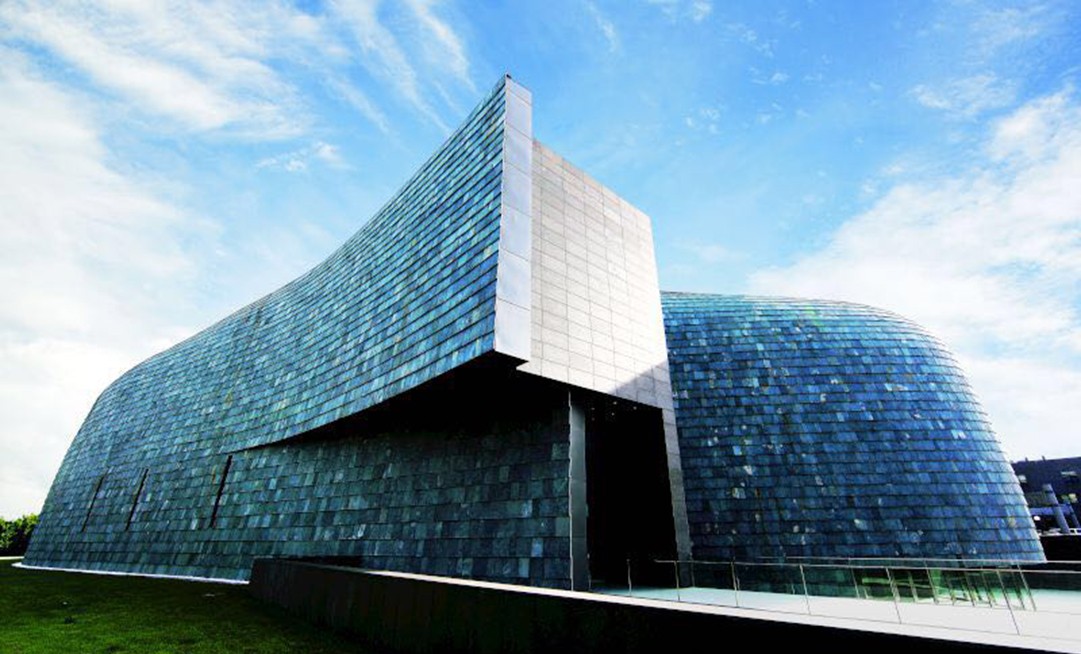
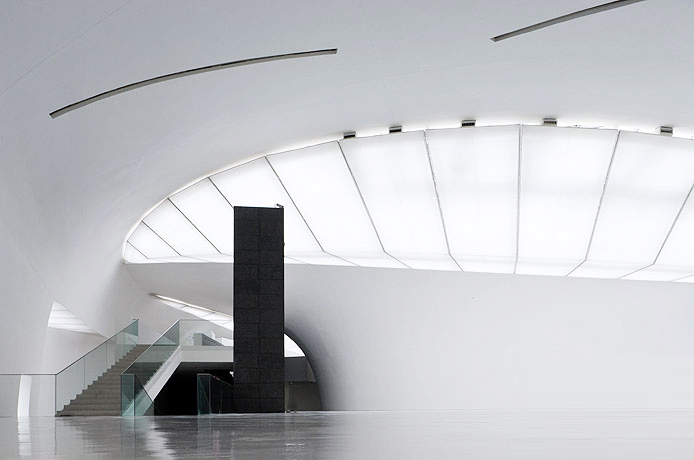
The new building of CAFA Art Museum was accomplished in 2008.
CAFA ART INFO: During the pandemic, art museums that emphasize public knowledge production and the relations between artworks and audiences were in a state of aphasia, which also gave birth to a number of virtual art museums. In this case, what can physical art museums do?
Zhang Zikang: I think digital art museums will create a new kind of art, an art suitable for a virtual art gallery display and an art with all-round sensory experience. Now many art museums have begun to display these works, such as some work that make people feel the real flow of energy, which uses technology to restore the real context. We also need to experience the virtual world from reality. For example, our dreams are virtual things produced in human brains. This is a new cognitive space. In this space, we can recognize the virtual from the real and the real from the virtual. The two are an interactive process. In the future, a virtual art museum will not only be a 360-degree restoration of a physical exhibition space. The 360-degree physical space restoration exhibition creates a strong perception of the museum and the audience. For example, when we cannot visit on-site exhibitions, but we can experience the museum space on the internet, and then prepare artworks as some works are in dialogue with the space. Good museums emphasize the viewing of works and the relationship between space and works. Some virtual works displayed online go beyond the cognition of physical space. Art museums must promote the development of these virtual artworks.
CAFA ART INFO: The main concept of virtual exhibitions is to display online, which actually dissolves the form of a physical art museum. This year’s online graduation exhibition of CAFA uses the exhibition halls of CAFA Art Museum as a model to build a 1:1 digital art museum. What are the considerations for this?
Zhang Zikang: First of all, the suddenly global spread of COVID-19 at the beginning of 2020 has altered the original production and life order of countless people in the world; on the other hand, with the advancement of science and technology, human life has been extended and expanded as never before. It has eliminated many physical and physiological boundaries and it can be said that it has stimulated infinite possibilities in time and space.
In such a background, the “2020 CAFA Online Graduation Season” presented more than 10,000 graduation works from 31 doctoral candidates, 375 master students, and 846 undergraduates from 13 teaching institutes. The virtual art gallery is presented in 9 virtual exhibition halls of 54,000 square meters and more than 20,000-30,000 works are displayed through the “hyperlinks” of each student to fully display the academic achievements of graduates in the form of web pages. This is a “2020 CAFA Graduation Season Art Museum” fixed online and never going offline. Since the exhibition went live, the number of visitors has exceeded 10 million and the coverage has spread to more than 100 countries. This “always online” graduation season of CAFA is not only a scene for remodeling and content presentation, but it also features a variety of subjective, interactive and maneuverable functions such as sharing likes and zooming in on details which are set up to make audiences feel the unprecedented improvements in novelty and a sense of participation. At the same time, art can spread farther and farther without geographical boundaries and time limitations.
This is also evident in the transition from books to e-books that we have experienced and are more familiar with. With the evolution of digitization, the development of art museums and publications we are faced with the same problems as how to cultivate audience awareness and habits, optimize feelings and experiences and how to reconstruct ourselves. We must break away from traditional concepts and limitations.
For example, when a book described the details of Mei Lanfang’s singing, you can’t hear the sound when you read the narrative in the text, but you can hear the sound in an e-book and you can also see the characters. Returning to the digitization of museums, at the very beginning, many museums digitized traditional works and publicly presented them on the internet. This was the original concept of museum digitization.
For digital works to be implemented in the exhibition space, we need to simulate a realistic space, that is, currently many art museums take 360-degree shots after completing physical exhibitions and restore them to the original exhibition effect for the audience to watch the actual exhibition online. Actually, this approach is only in its infancy. When we consider to do a purely digital exhibition, problems such as the texture of the virtual exhibition works come out.
With the developments in science and technology, when we put the work in a 1:1 virtual space, set up the same light projection as the built space and displays of the color and texture of the work to the utmost strength, these issues will all be dealt with and resolved. What art museums should consider more are cutting-edge issues, such as changes in creative forms caused by viewing methods, which will produce an inevitable future for digital art museum exhibitions.
CAFA ART INFO: When the popularity of virtual exhibitions during the pandemic has become possible and there have been mixed reviews on the form and effect of virtual exhibitions. What do you think of them?
Zhang Zikang: I think the difference in praise and criticism is firstly because the virtual museum is not well known and familiar enough for audiences. In addition, most of the current virtual art museums are actually a copy of the physical art museums. In addition, the maturity of the technology is not the same. It is understandable that the audience cannot have a more personal experience for the time being. And when the presentation of the exhibition is inconsistent with the expectations of the audience, they will certainly criticize it. This is a question of habit and a question of cognition. The two cannot be replaced with each other, but they can promote each other. For example, if we do a physical exhibition, there are about 20,000 spectators, but the increasing spectators of online exhibition might reach 100,000 spectators. You said whether the virtual exhibition is not worth doing or not, of course it is worth doing, because we play a better role on the impact and social functions of the exhibitions. It is a very good thing to not only enhance the social aesthetic education of the museum, but also strengthen the brand image of the museum.
At present, I think there are mainly two problems in an exhibition as follows. One is that it takes a process to shape and cultivate the cognition of museum audiences; the other is that the response of art museums is lagging behind, as they are unable to obtain synchronized social cognition updates and iterations. The development of art museums in China is relatively slow, so many people still hold onto solid concepts or deviations in their understanding of museums. Even for some people who are already engaged in related work, their professional knowledge still needs to be further improved. Museums might also lack professional academic construction and the use of promotion. During the curator training we held recently, when everyone was communicating, I asked them what kind of museum, what kind of exhibition and what kind of collection they want to do. No matter what kind of city you come from and what kind of museum you are committed to, all of their answers were that they want to build the best museum, the best exhibition and the best collection. It is quite touching to have such a flourishing cultural sentiment and lofty ambition, as well as the dedication to it. But how to understand this good intention, I think more often it is based on the personal experience and perception of the judgement. For example, one who has never seen the original works of Picasso and Qi Baishi, can he make a reasonable comment on their artistic creations? If without the accumulation of knowledge and the corresponding experience framework, it is impossible to make a systematic and objective evaluation. In this way, how can we assume the responsibility of the museum for the public, culture and art? Everyone wants to build the best art museum and we are working hard for this. This desire and ideas are very good and we who work for museums will always stick to it. But in many cases, this “good intention” cannot be completely established universally and objectively. This is a very regrettable phenomenon. Therefore, our common understanding of value needs to be further constructed.
How shall we understand such a value identity? How to respect the professionalism of art, how to re-recognize traditional art again and how to promote and establish modern and contemporary art museums? These belong to a value issue in China and it is precisely this value establishment that we are missing. For example, when we engage in academic studies, the accumulation of knowledge and the learning process are called academics. If the academics promoted by museums are of no value to society, it would be a great waste of national resources and betrayal of the trust of the public. I think this is the biggest problem.
Looking at this issue from the three types of art museums I have experienced, from private art museums to state-owned art museums, to an academic art museum such as CAFA Art Museum, although these art museums differ in organization and positioning. But all of them require us to continuously promote the cultural awareness and construction of a future art museum with the right to speak.
CAFA ART INFO: In the 5G era, many technological concepts that were previously unachievable will be realized in the near future. Could you please talk about your expectations for the future of virtual exhibitions?
Zhang Zikang: The current virtual exhibition is just a new beginning and there is still more room for development in the future. In the future, what kind of model will the virtual museum develop into? My current comprehension can only be based on the existing science and technology and I believe that the future technology will create more possibilities. Regardless of any perspective, future exhibitions must be linked by interactive mapping among artists, works and audiences. On the one hand, according to the development of science and technology and the creation of artists, it can promote the art museum to gradually establish a new viewing mode and experience, a new cognitive model in art and a new cognitive framework for the future. The future virtual art museum will definitely be a more diverse and rich experience venue. On the other hand, we can promote the creativity of art based on the current development of technology and art and launch some more valuable and thoughtful works, so that artists can create rich and colorful works with more dimensional thinking. Different from previous works, it also continuously expands and cultivates an audience’s cognition and experience, as well as the production and creation of intellectual knowledge. I hope that future art museums cannot only promote the development of social cognition, but also promote the creation of such works that recognize the future world.
CAFA ART INFO: Because of the pandemic, art museums which were usually busy seem to have suddenly pressed the pause button, but art museums did not stop speaking. Can you talk to us about the opportunities and challenges the pandemic has brought to the CAFA Art Museum?
Zhang Zikang: Even though the public is still unable to enter art museums, the social aesthetic education responsibilities that art museums undertake cannot be suspended. Related works should always exist. Further, we must also figure out how to surpass our own experience under the existing circumstances and realize our mission in a better way. The first is to digitize the collections of our museum and establish the display system in everyone’s mind. Many fine collections of CAFA have not been displayed due to limited space. The mode of the virtual museum has solved this problem. We hope to use this to promote research on virtual exhibitions and help viewers build new perceptions. Besides, we made a virtual review of classic exhibitions that we have presented. Actually, major art museums are doing similar things. At the same time, we are also in contact with major foreign art museums to discuss planning online exhibitions. In considering the possibility that academic exchanges with art museums are hindered by the pandemic, we have launched a seminar and made plans with art museums in the context of this pandemic and we constantly update the newest theories and practices of art museum development that involve the country and society. For example, some articles about COVID-19 on museums and art recognition show that the most discussed is the thinking about the development of art museums during and after the pandemic.

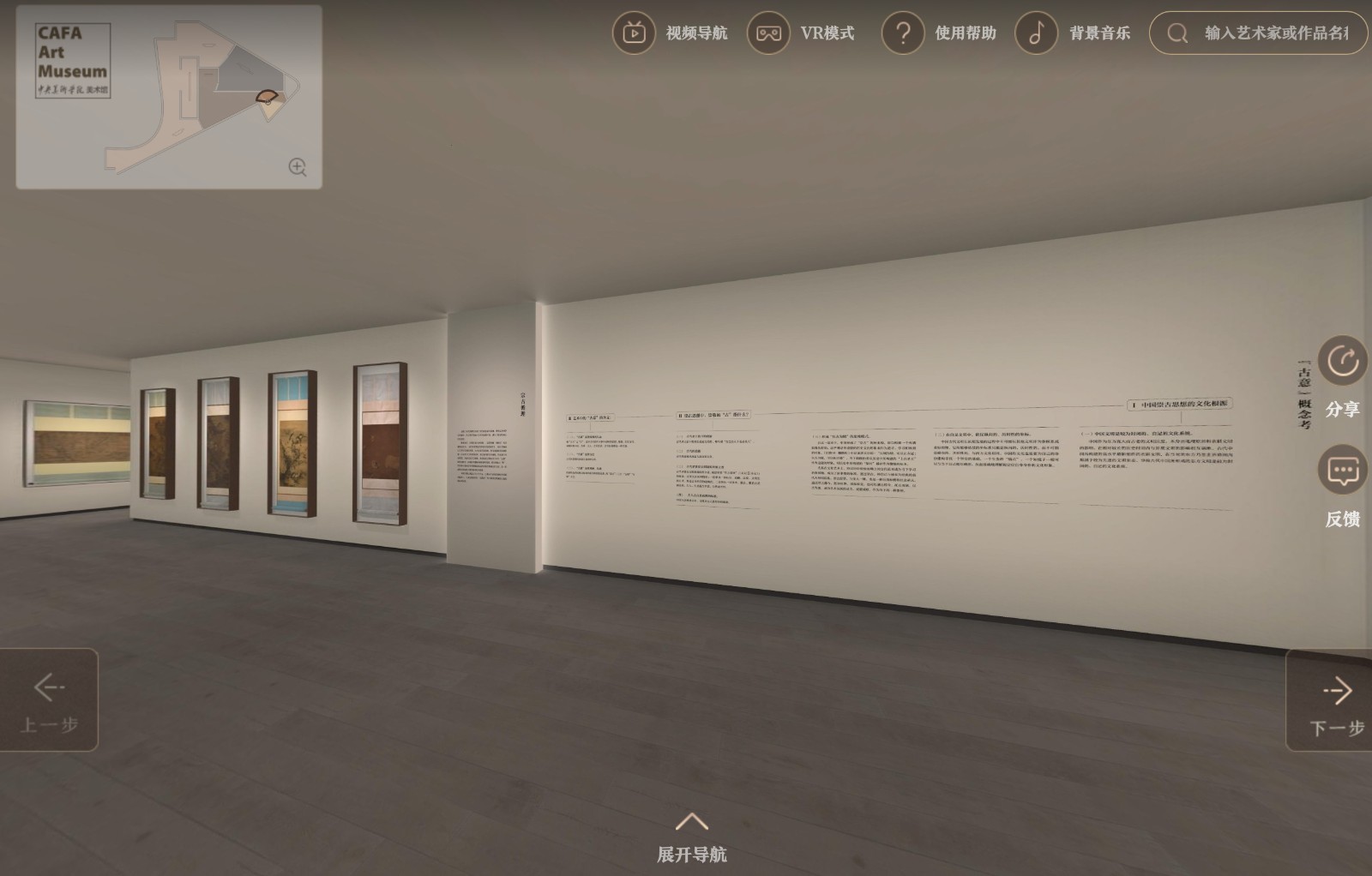
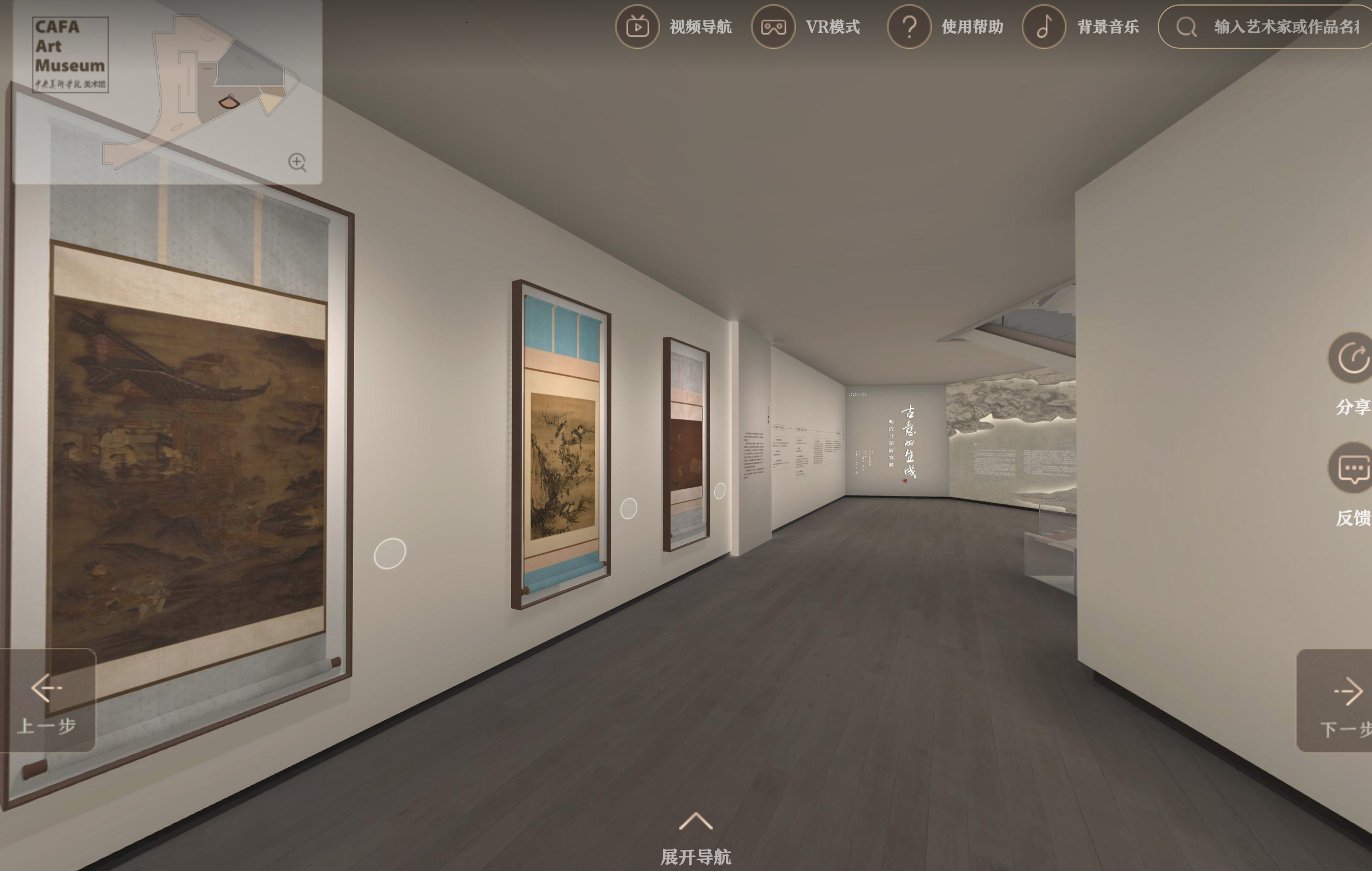
View of the online exhibition of “The Generation of Ancient Ideas: Research Exhibition on Calligraphy and Paintings from Ming and Qing Dynasties”
CAFA ART INFO: CAFA Art Museum collects student works every year. For the pandemic, whether this plan has changed this year, please talk about the collection for students’ works.
Zhang Zikang: The collection system of CAFA Art Museum has a dual concept. One is to focus on the development of art education. This collection can reflect the developmental context of China’s most prestigious art academy and the entire art education. The other is the socialized collection. CAFA has established a socialized collection system of modern and contemporary art. Of course, this value system is mainly based on the academic level.
In addition, we have a special collection committee, which is led by the Deputy Dean of CAFA Su Xinping, together with several senior teachers and colleagues from the Collection Department of CAFA Art Museum and several academic experts selected from the Academic Committee of CAFA. At the beginning, the team met to discuss a rough standard for the collection. This standard is mainly considered based on the establishment of the value of art museums. Briefly speaking, innovation is very important in terms of creative concepts. In terms of skills, it also requires a breakthrough in painting language, as well as innovations in painting language and concepts.
This year’s collection is similar to that in previous years. What has changed is the addition of the collection of virtual works and documentary research works. On the one hand, it is an enrichment and expansion of the existing collection system and content of the museum and on the other hand, it also provides more possibilities and convenience for the creation and presentation of student artists. For example, some students made works at home based on good ideas, but they were limited by space and materials, they then could not make them. They used digital technology and made them into virtual works. We directly collect excellent dissertations this time and collect the academic clues they sorted out. In the future, CAFA Art Museum will realize this kind of exhibition project featuring academic research, with the interpretation of text, the exhibition will combine new technology and present a new model.
The expansion of our collection is also in line with the future collection direction of museums. CAFA Art Museum will release this year’s outstanding graduation works collection in the future. Spectators will be able to see the new collection of digital works in the online museum. Virtual works often start from young people and their creations in this area will increasingly highlight their value, so in this area we start with college students first. This will be a very good beginning and development direction.
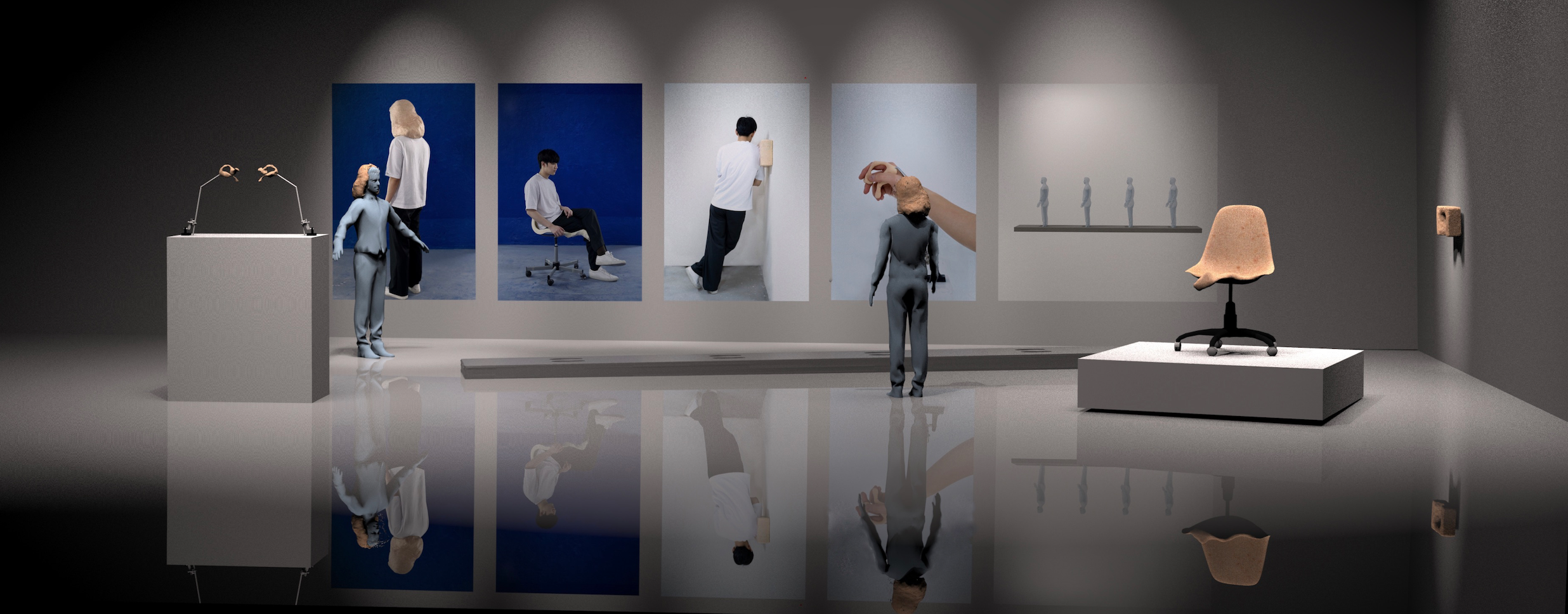
Gu Chengyang, “Daily Operation”, Digital Collection, 2020
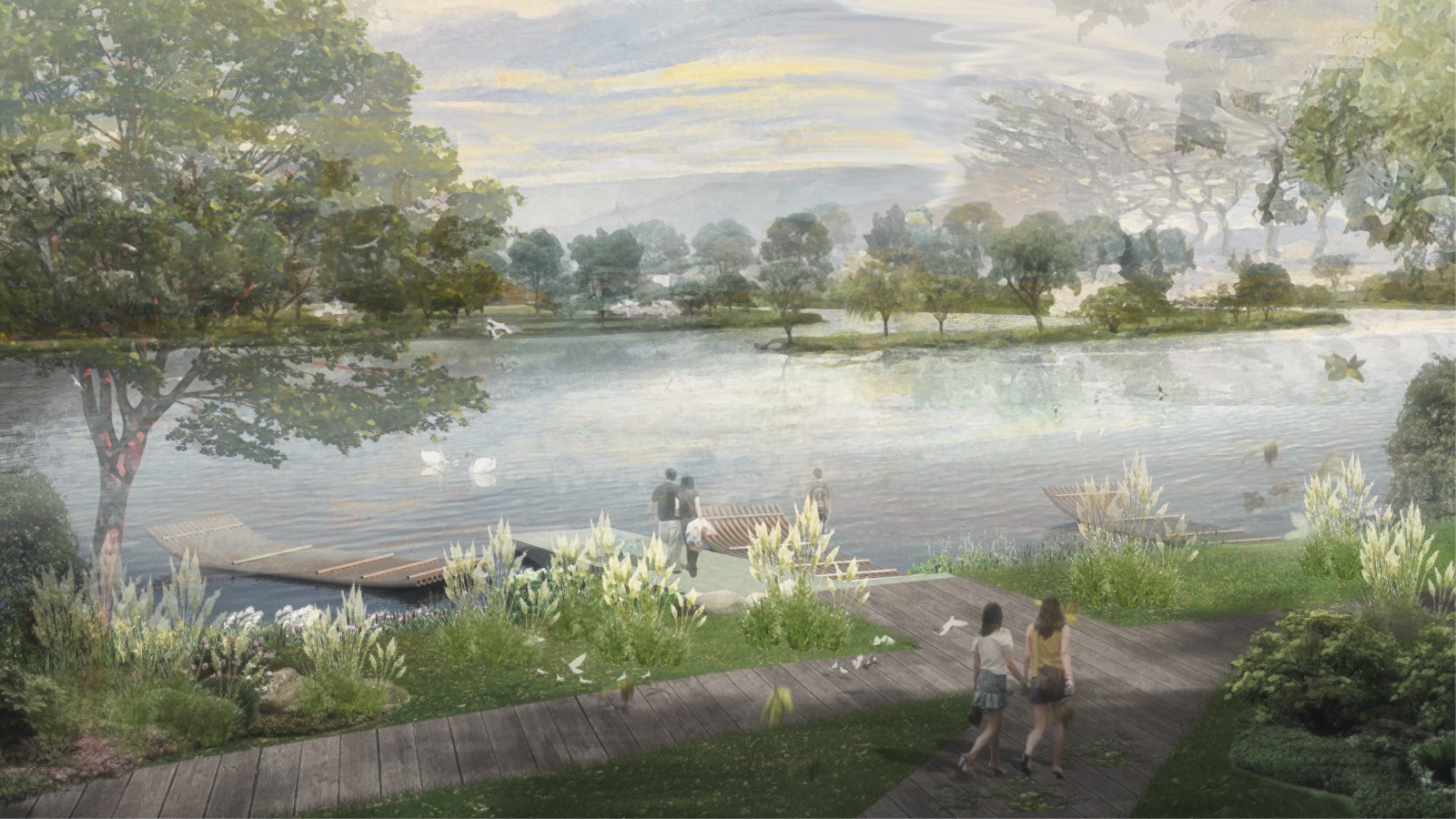
Lu Baiyun, “Moon Bay Core Area Planning and Design Research”, Digital Collection, 2020

Song Meilin, “Museum of Hopson One”, Digital Collection, 2020
CAFA ART INFO: Because of the pandemic, we still cannot see the actual objects in some paintings or sculptures. How does the collection of this part for the museum guarantee the quality?
Zhang Zikang: These student works are strictly evaluated and checked by their respective tutors. We will first consult the teachers in charge one by one and then the museum will review these works that meet the collection standards by our professional teachers and then through technological means, such as zooming in on details, presenting work from every angle, etc., to carefully judge works to ensure the quality of the collection.

Chen Xinyue, “Gen Yue”, 170cm×180cm, Ink and color on silk
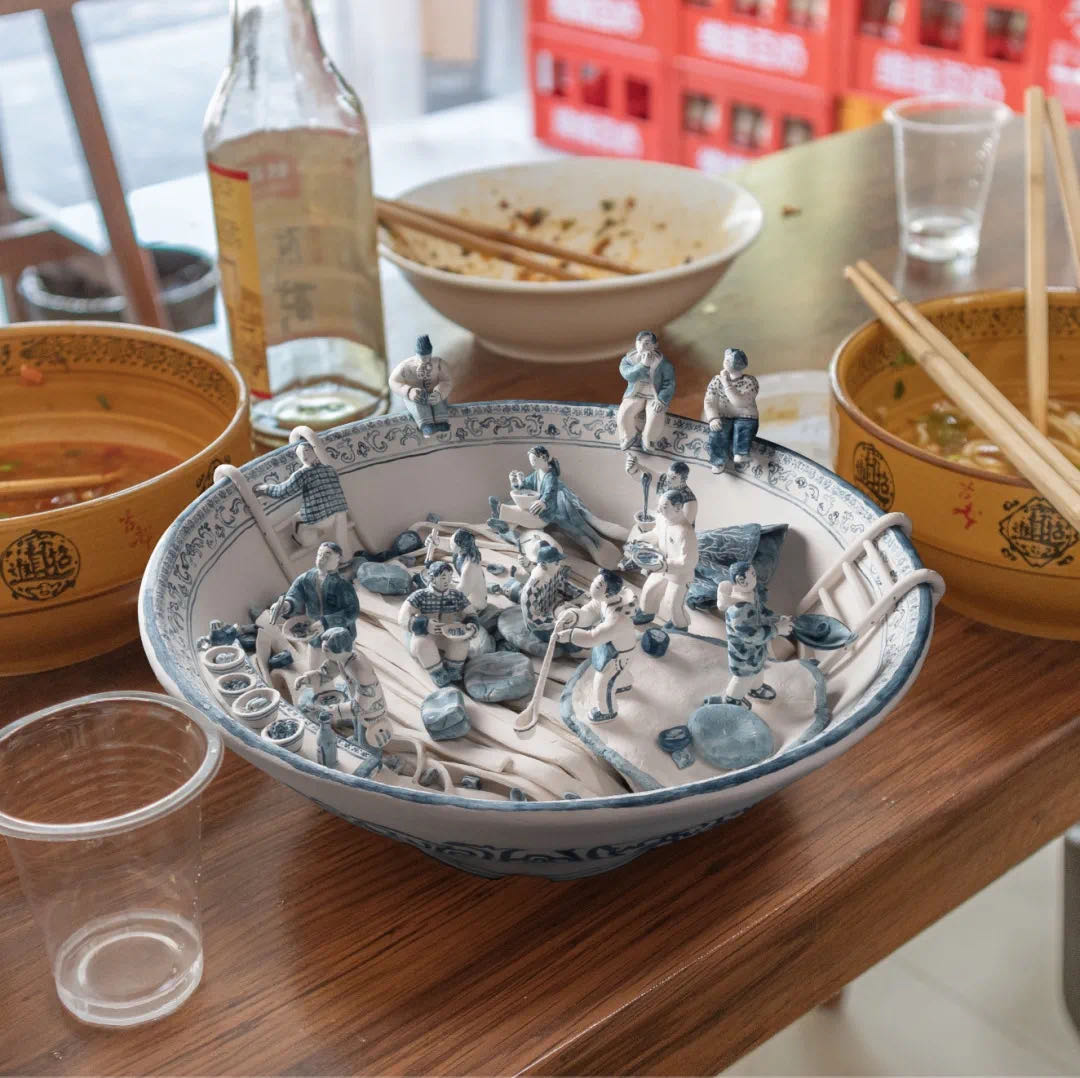
Xu Zebang, “Living in the World: Rice Noodles”, Clay, 30×30×20cm
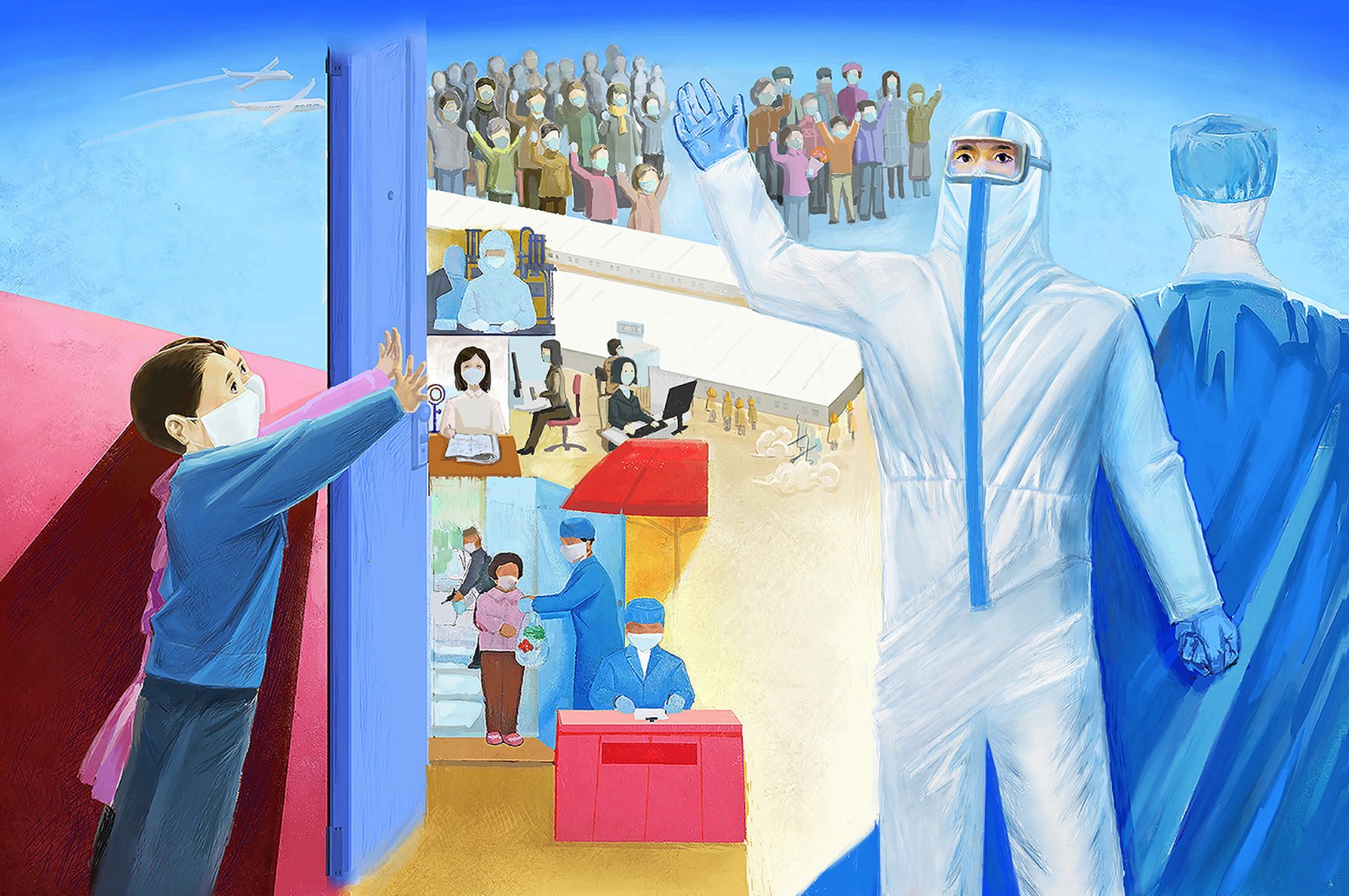
Ding Siyu, “Expedition”, 21260×14173dpi, Digital Painting, 2020
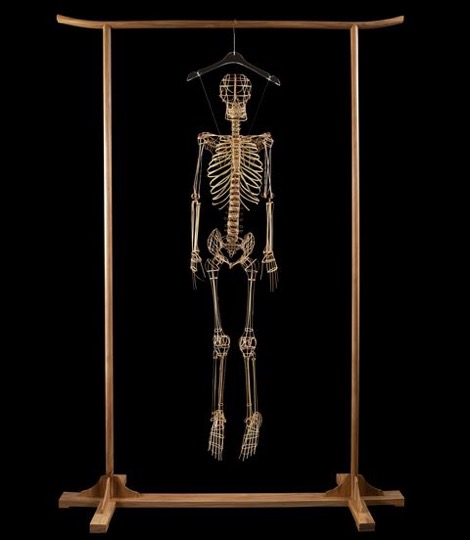
Kang Heng, “Skeleton”, 225cm×159cm, Bamboo and paper, 2020
CAFA ART INFO: As a veteran director of art museums, you have handled countless works and have seen countless works. What do you think of students’ graduation works and the significance for a student’s future growth?
Zhang Zikang: I think the student group is young and active, with rich imagination. Although they may not be very mature in some aspects, their explorations in creation, for example, many of their ideas and practices surpass the inherent concepts of the past. I think it is very valuable and personally I like them. The creations of artists during their student years have a lot to do with the future development of their artistic creations and it is also the most important stage of their creative career. For example, the work by Liu Xiaodong that he created when he was a student and we have collected has a lot to do with his later artistic development. It is very important to study the ideas of an artist’s creation during his school days and to study their creation from school to society, for the entire collection system and art context research.
Certainly, every student’s situation is different, some of them may be very mature at this stage. Picasso painted very realistically when he was 14 years old. Among our young students, some of their works are also particularly good. Some students are not very mature in creation at this stage, but they have unique ideas and their concepts are very unique and novel. This category of work is also considered when we collect. Because of a brand-new creative method, it is possible to amplify and construct artistic meaning in the future. Discovering a new artistic language or method that inspires and represents the future is also a manifestation of the academic nature of an art museum.
CAFA ART INFO: Under the dual influence of the pandemic and online exhibitions, how does the appearance of student works differ from previous years?
Zhang Zikang: With the continuous improvement and deepening of modern art education, on the whole, students’ works can be said to surpass previous ones every year. Currently, students are creating in a relatively independent space, but there is not so much interference, ideas are expressed more fully and the integrity and independence of the works are stronger. I feel that this is of a particularly prominent significance in this exhibition. This also triggered our reflection on how to better grasp the balance between freedom and interference in teaching. Of course, from the perspective of the museum, we actively encourage and promote students’ independent thinking and creative abilities.
CAFA ART INFO: Finally, please share with us your state and thinking during this period.
Zhang Zikang: It is very rare in a previous life to have a relatively complete period of time to calm down and do some in-depth and repeated thinking. During this period, I have more time to flexibly allocate time and I can think more deeply about some issues. During this period of time, I have conducted more systematic and in-depth research on the intellectual knowledge on the basis of what I have been doing before. On the one hand, I sort out my own ideas and write some things, on the other hand, I further promote related research according to my own thinking and constantly improve the academic progress in this field. In addition, I also learned to paint when I was in school, and now I have sufficient time to pick up the brush and concentrate on painting. I also experience a lot of understanding of the current situation in art during painting and I feel this is also a refinement for myself.

Untitled 2020.5, 1.8×1.5m, oil on canvas, 2020.5
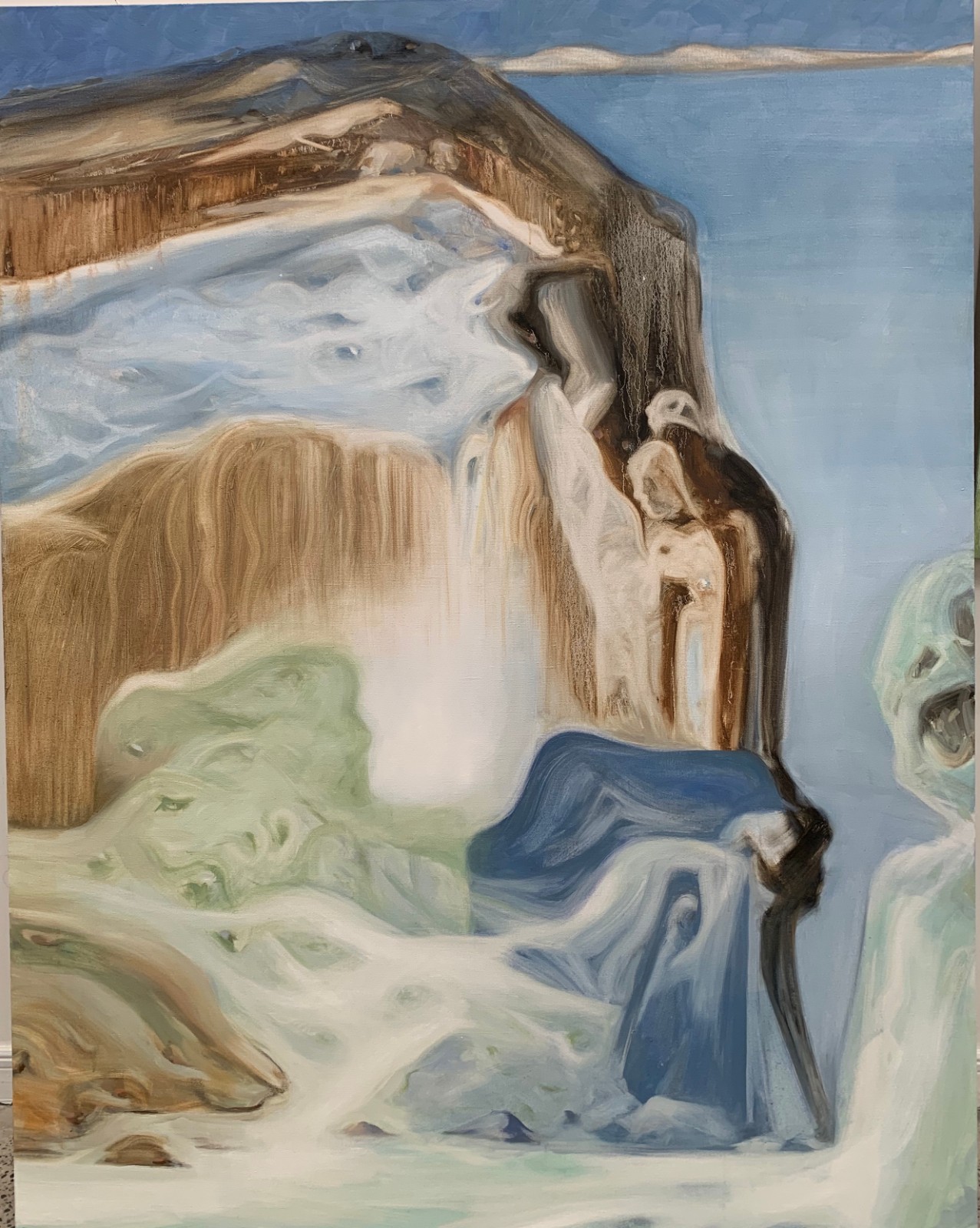
Untitled 2019.8, 1.8×1.5m, oil on canvas, 2019.8

Two Trees, 1.8×1.5m, oil on canvas, 2020.2
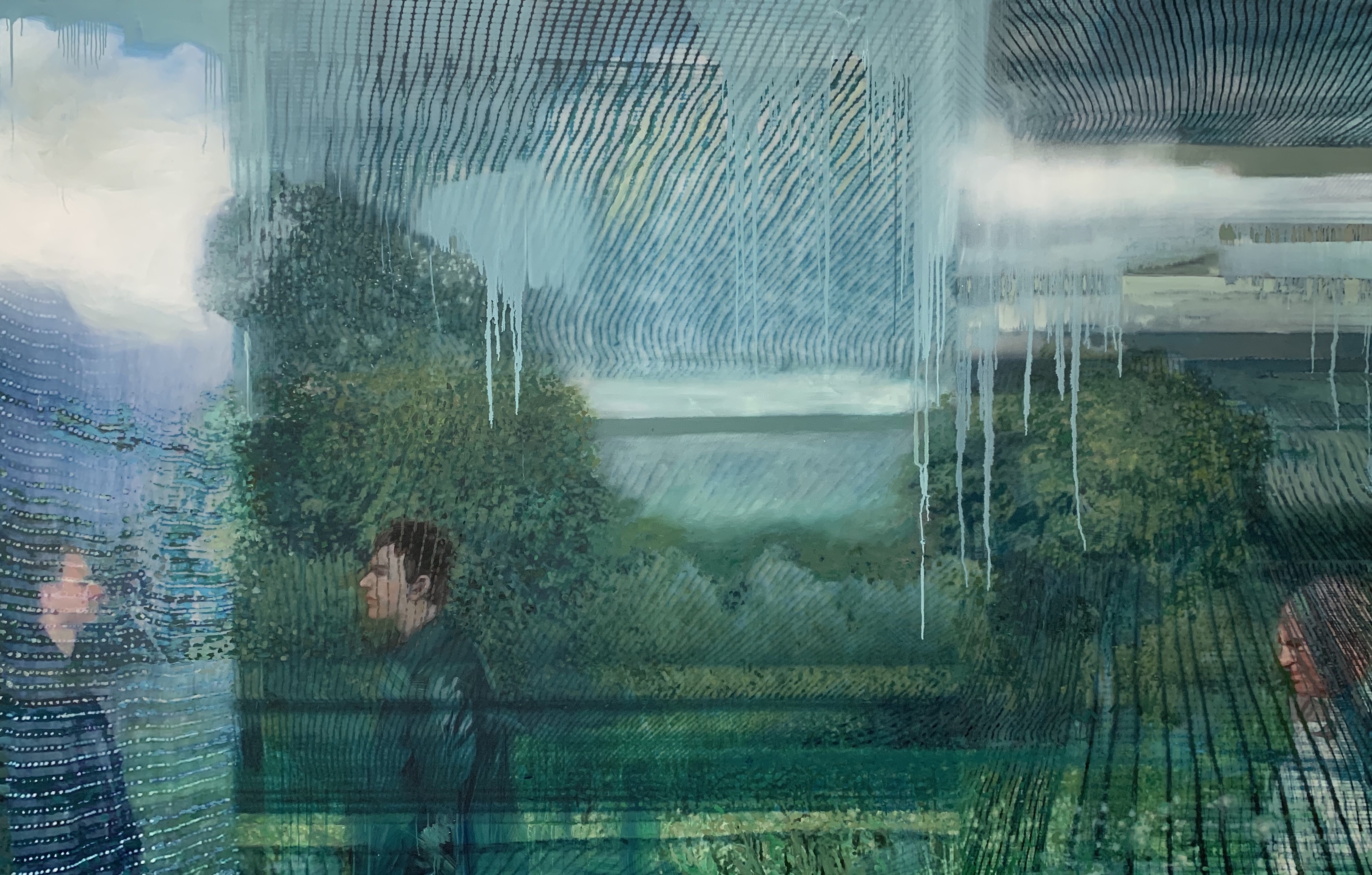
One of the Nets, 1.8×3m, oil on canvas, 2019.2
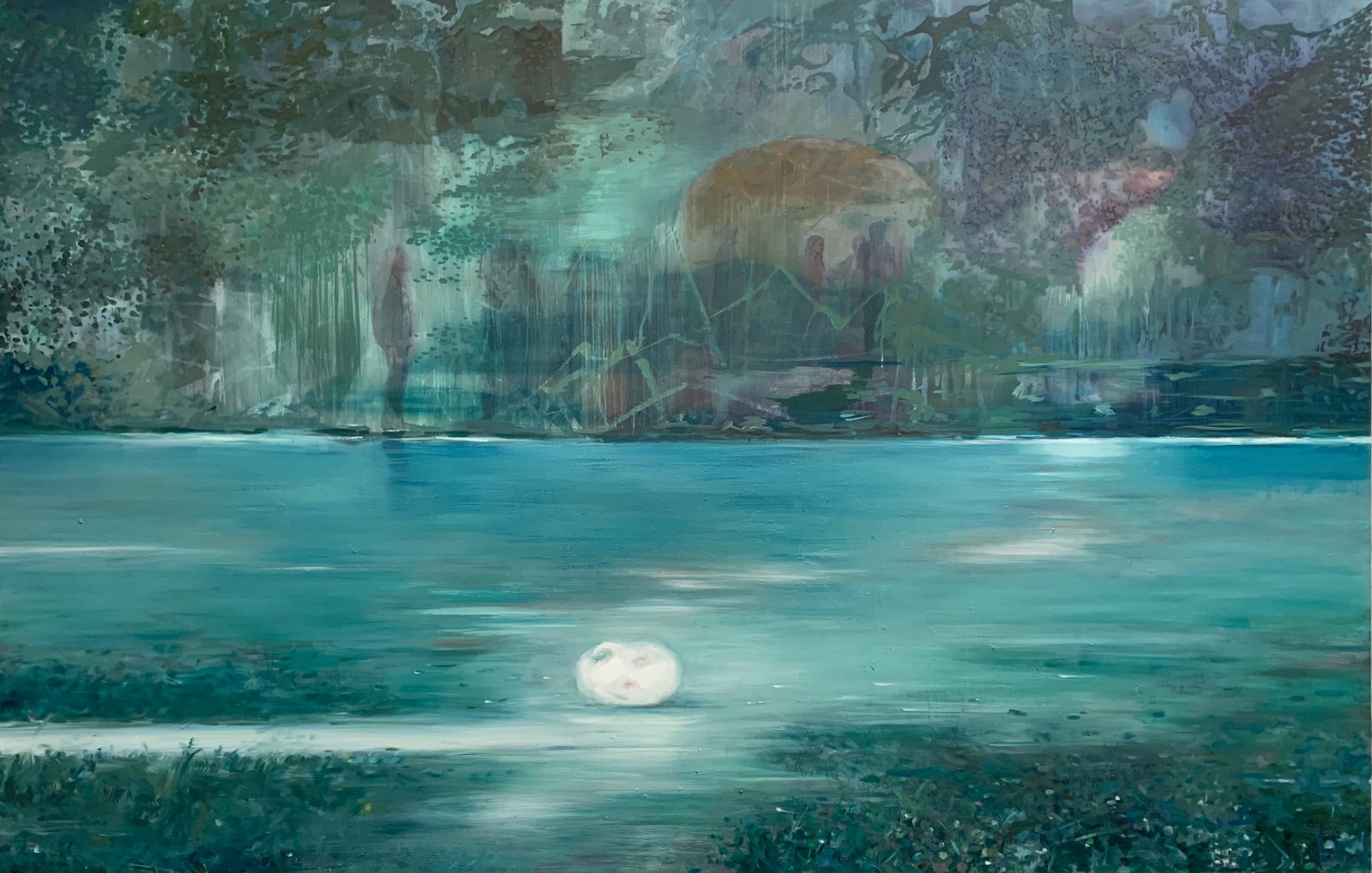
Floating Objects, 1.8×3m, oil on canvas, 2019.3
About the interviewee
Zhang Zikang, born in Hebei in 1964, is the current Director for CAFA Art Museum. He used to be Deputy Director for National Art Museum of China, Deputy Director of Culture Department for the Xinjiang Uygur Autonomous Region (a post in Xinjiang), President of the Culture and Art Publishing House and Director for Promotion Center of Chinese Art Research at Chinese National Academy of Arts, Director of Art Information Research Center at China National Academy of Painting, Vice President of Chinese Contemporary Art at Chinese National Academy of Arts, Director of Today Art Museum, Editor-in-Chief of Oriental Art and Today Art Magazine, Director of Feng Ya Song Culture and Art Center at Hebei Education Publishing House, Beijing. He is Member of the Ninth Council of the China Artists Association and he concurrently serves as the Deputy Director of the National Art Museum Professional Committee and Deputy Director of the Experimental Art Committee of the China Artists Association.




























